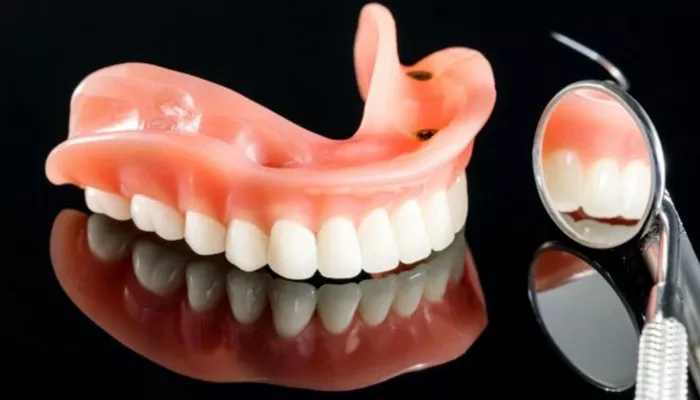Dentures are a common solution for people who have lost some or all of their teeth. They can greatly improve a person’s ability to eat, speak, and smile with confidence. Understanding the types of dentures available can help patients make informed decisions about their dental health. This article will discuss the three main types of dentures: complete dentures, partial dentures, and implant-supported dentures. Each type serves a unique purpose and is designed to meet the specific needs of the patient.
1. Complete Dentures
Complete dentures are used when all of a person’s natural teeth are missing. They are custom-made to fit comfortably over the gums and provide a natural appearance. There are two main types of complete dentures: conventional and immediate dentures.
Conventional Complete Dentures
Conventional complete dentures are made after the remaining teeth have been removed and the gums have healed. This healing process can take several weeks, which allows the gums to shrink and stabilize. Once healing is complete, the dentist takes impressions of the gums to create a set of dentures that fits perfectly.
Advantages:
Natural Look: Conventional dentures are designed to mimic the appearance of natural teeth, improving aesthetics.
Durability: Made from high-quality materials, they can last several years with proper care.
Improved Functionality: They enhance chewing ability and speech compared to having no teeth at all.
Disadvantages:
Adjustment Period: New wearers may experience discomfort and require time to adjust.
Bone Resorption: Over time, the jawbone may shrink, leading to a poor fit and the need for replacements or adjustments.
Immediate Complete Dentures
Immediate complete dentures are placed in the mouth right after the removal of the remaining teeth. This type of denture allows the patient to have teeth immediately, avoiding the embarrassment of being without teeth during the healing process.
Advantages:
Immediate Aesthetics: Patients do not have to wait for a natural-looking smile.
Protection of Gums: They protect the gums while they heal after tooth extractions.
Disadvantages:
Frequent Adjustments: As the gums heal and change shape, immediate dentures may require frequent adjustments for a proper fit.
Temporary Solution: They may not be as stable or durable as conventional dentures.
2. Partial Dentures
Partial dentures are used when some natural teeth remain in the mouth. They consist of a prosthetic tooth or teeth attached to a gum-colored base, which is held in place by clasps that grip the remaining teeth. Partial dentures can be removable or fixed.
Removable Partial Dentures
Removable partial dentures (RPDs) are designed to be taken out for cleaning and while sleeping. They provide a natural appearance by filling in gaps left by missing teeth.
Advantages:
Convenience: Easy to remove for cleaning and maintenance.
Customizable: They can be designed to match the color and shape of the remaining natural teeth.
Disadvantages:
Potential Discomfort: Some users may experience discomfort or difficulty adjusting to the appliance.
Less Stability: Removable partial dentures may not be as stable as fixed options, especially during eating.
Fixed Partial Dentures (Bridges)
Fixed partial dentures, commonly known as dental bridges, are anchored to the remaining natural teeth or dental implants.
They are not removable and provide a more permanent solution for tooth loss.
Advantages:
Stability: They offer greater stability compared to removable options, allowing for better chewing and speaking.
Natural Function: Fixed partial dentures function similarly to natural teeth.
Disadvantages:
Invasive Procedure: Preparing the adjacent teeth for support can be more invasive, requiring removal of some enamel.
Potential for Decay: The supporting teeth are at risk of decay if proper dental hygiene is not maintained.
3. Implant-Supported Dentures
Implant-supported dentures are a more modern option that combines the benefits of dentures with dental implants. They consist of a full or partial denture that is securely anchored to dental implants placed in the jawbone.
Benefits of Implant-Supported Dentures
Enhanced Stability: They provide a stable foundation, reducing the risk of movement while eating or speaking.
Bone Preservation: Implants stimulate the jawbone, helping to prevent bone resorption that typically occurs with missing teeth.
Natural Feel: Patients often report that implant-supported dentures feel more like natural teeth than traditional dentures.
Disadvantages of Implant-Supported Dentures
Surgical Procedure: The placement of implants requires surgery and a longer healing time.
Cost: They tend to be more expensive than traditional dentures due to the surgical component and the materials used.
Conclusion
Choosing the right type of dentures is crucial for restoring function and aesthetics after tooth loss. Complete dentures, partial dentures, and implant-supported dentures each serve specific needs and have their own set of advantages and disadvantages.
It is important for patients to consult with their dentist to discuss their options and find the best solution for their dental health. Factors such as the number of missing teeth, the condition of the remaining teeth, and personal preferences all play a role in this decision. With the right type of dentures, patients can regain their confidence, enjoy their favorite foods, and smile with ease.
Related topics:

